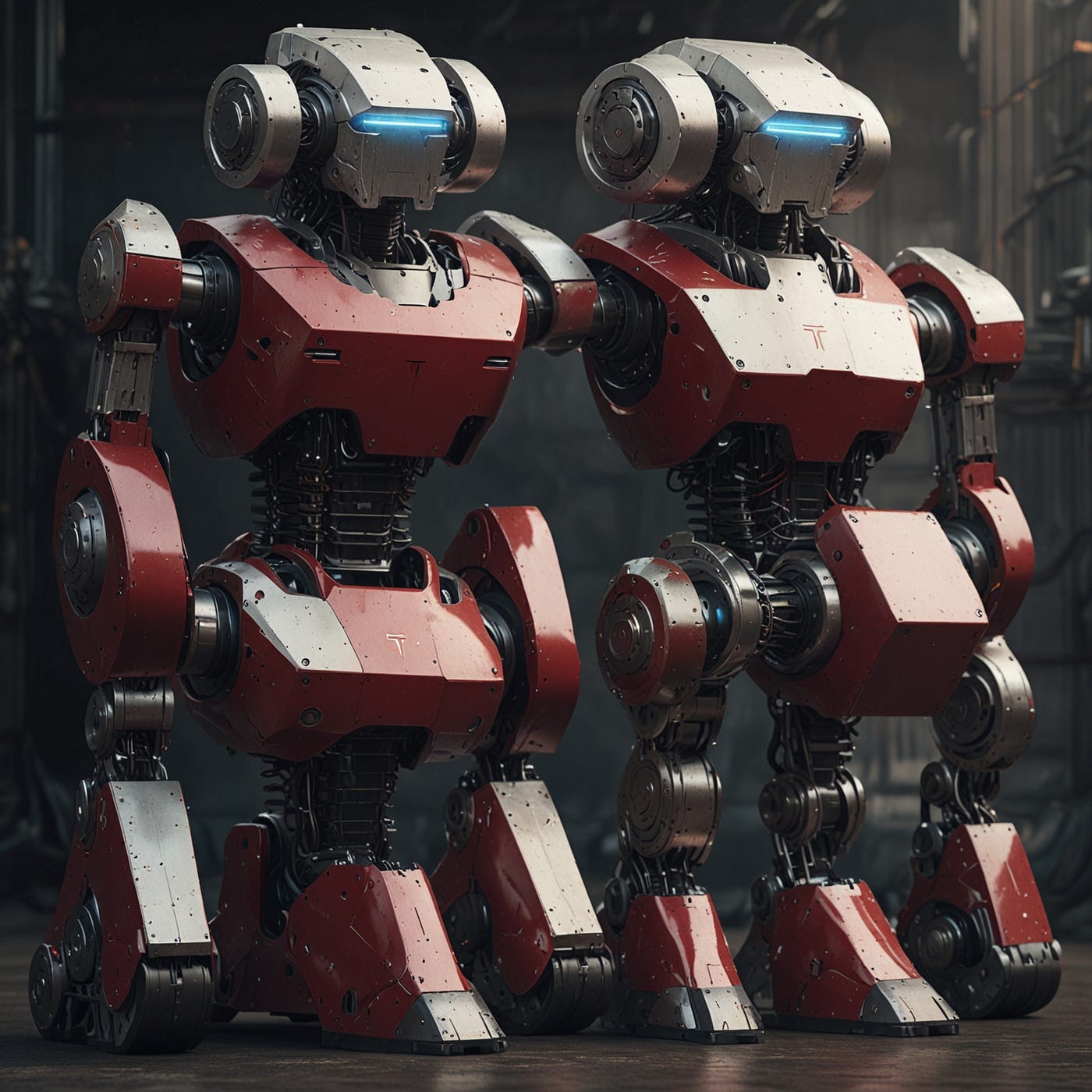Tesla’s Robotic Ambitions: A Nod to I, Robot?
Tesla’s recent unveiling of its Optimus robot, Robovan, and Robotaxi has sparked a flurry of online discussion. While the company’s ambitious plans for robotic innovation have garnered attention, the designs of these products have drawn comparisons to the 2004 sci-fi film I, Robot.

A Striking Resemblance
Tesla’s “We, Robot” event, held at the Warner Bros. lot, showcased a trio of robotic creations that bear a striking resemblance to their counterparts in I, Robot. The Optimus robot, named after the Transformers character, shares similarities with the NS5 robots from the film. Meanwhile, the Robovan and Robotaxi appear to be inspired by the robot delivery vehicle and self-driving taxi seen in I, Robot.
Social Media Outrage
The uncanny resemblance between Tesla’s robots and those depicted in I, Robot has not gone unnoticed. Social media users have been quick to point out the similarities, accusing Tesla of plagiarism. The company’s choice to name the event “We, Robot” has only fueled speculation about their intentional homage to the film.
Director Alex Proyas Weighs In
The director of I, Robot, Alex Proyas, has responded to the controversy on Twitter. In a lighthearted tweet, he asked Elon Musk to return his designs, implying that Tesla may have drawn inspiration from the film’s visual concepts.
A Creative Inspiration or Plagiarism?
The debate over whether Tesla’s robot designs are a creative homage or a case of plagiarism is ongoing. While it is possible that the company was simply inspired by the film, the similarities are undeniable. Some argue that Tesla may have benefited from the established visual language of I, Robot to help communicate their robotic vision.
The Future of Robotics
Regardless of the controversy surrounding Tesla’s robot designs, the company’s ambitious plans for robotic innovation are significant. The development of robots capable of performing tasks like driving and manufacturing could have a profound impact on society. However, it is essential to address concerns about intellectual property and ensure that innovation is not built upon the work of others without proper recognition.




